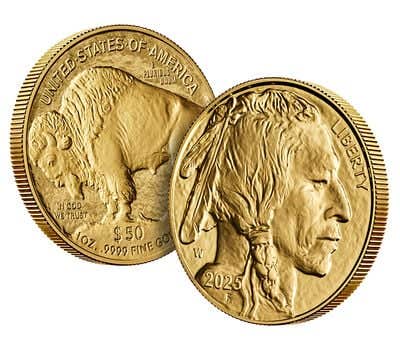Strong currencies won
I wish to make a few comments on Bruce Walker’s article, “Gold holds fast as a solid investment”. Walker made a lot of good points, although I would like to make one exception to one of his points.
I wish to make a few comments on Bruce Walker’s article, “Gold holds fast as a solid investment,” published in the March 23 edition of Numismatic News.
Walker made a lot of good points, although I would like to make one exception to one of his points. He states that the dollar, pound, euro, etc. will go to zero, almost as if he has a crystal ball telling us that this will happen.
Yes, there is always a possibility that it can happen, but I think the chances of those strong currencies, especially the dollar, going to zero is remote. In fact, many people in the world would probably be in dire trouble if it ever happened as there would be almost total chaos, therefore strong governments will do what they can to prevent this from happening.
Of course, I agree with him that over time currencies will get weaker, but I also believe that the strongest currencies should still be worth something, even if just a fraction of today’s value.
I would have to say in the almost 234 years of the United States’ existence, the worst time of our monetary history was during the Civil War. The greenback lost a lot of value against gold and silver during that time, but it never went to zero. That period of time was undoubtedly a much worse time than what we’re going through now as no one knew prior to about 1864 what the outcome of that war was.
I think the only way the dollar would ever be worth zero is if we got attacked, lost a war and got taken over by an enemy, or, if almost everyone in the world would suddenly would simply shun the dollar, including its citizens. While having some precious metals in their possession (be it a government entity or an individual) indicates value, precious metals is only one way an individual or society prospers.
Personally, I don’t like fiat money but money backed with precious metals also has a history of its own problems (if you take the time and read history). Probably the best way to keep a currency strong and confident is for government to refrain from deficit spending and building up debt. There’s no such thing as a perfect currency.
Although financial historians blame Richard Nixon for “closing the gold window” on Aug. 15, 1971, the exchange of dollars for gold among foreign nations raiding our gold reserves really ended in March 1968 (under Lyndon Johnson’s administration) when Congress removed the 25 percent gold backing of the dollar.
The removing of the 25 percent backing was to hopefully reassure foreign nations exchanging their dollars for gold that there would be plenty of gold to pay them. That reassurance fell on deaf ears as more dollars were presented for conversion into gold.
In reality, there were more dollars abroad than there was gold in the U.S. Treasury for conversion. From March 1968 to August 1971, few dollars were allowed to be exchanged for gold while the government sat on its hands trying to figure out what to do about the crisis. Under Nixon’s decree of the U.S. dollar no longer being exchanged for gold, it simply meant those nations waiting in line to convert their dollars for gold should not bother waiting in line any longer. Since then, the dollar and other major currencies weakened but haven’t hit zero.
For those who can afford it, I believe it’s prudent to have roughly 3 to 5 percent of their assets in precious metals, but I wouldn’t go overboard on them. Look at it more as an insurance policy versus something that’s going to increase in value. Also, always be aware that government can try (even if it isn’t successful) to either confiscate or restrict ownership of anything it deems to be a detriment to its policies – all for the sake of “the common good.”
At the same time, have a little fun while building your holdings. By this I mean instead of buying simply generic bullion, look for friendly dealers who would allow you to pick through their “junk” stuff while you try to put sets together.
For example, over many years of going through junk silver, I can’t tell you how many mintmarked Mercs and Walkers of the teens, ’20s and ’30s in full Good to Fine-plus I plucked out of boxes and cans for bullion prices from the friendly dealers. Up until about eight years ago when full Good-Very Good common date Standing Liberty quarters were selling for $1.50 to $2 each, the 1927-D could occasionally be found for the same price. Five dollars bought the 1927-S in the same grade. If you want to buy a nice older U.S. gold coin, consider the following example. Instead of buying a generic MS-60 1899 eagle it might pay in the long run to spend just a little more and buy an MS-60 1899-O eagle (if you can find one at that price differential), which is many times scarcer. Don’t get caught up on “wonder grade” coins unless you have money you can afford to sit on and possibly lose.
Research before you buy! Be very, very careful of what you buy but at the same time be different by looking for scarcity and value besides quality. I can’t see spending, say, $60 for an MS-65 1983 quarter, where, for the same money you can buy an MS-63 1916-S Mercury dime.
Lastly, have fun. If you don’t have fun and simply look at it as just trying to make money, you’re going to be frustrated and not too happy. This is supposed to be a fun hobby, although some people never see it that way, unfortunately.
Stan Kijek is a Midwestern collector.
Viewpoint is a forum for the expression of opinion on a variety of numismatic subjects. The opinions expressed here are not necessarily those of Numismatic News.
To have your opinion considered for Viewpoint, write to David C. Harper, Editor, Numismatic News, 700 E. State St., Iola, WI 54990. Send e-mail to david.harper@fwmedia.com.
More Resources:
• Subscribe to our Coin Price Guide, buy Coin Books & Coin Folders and join the NumisMaster VIP Program









